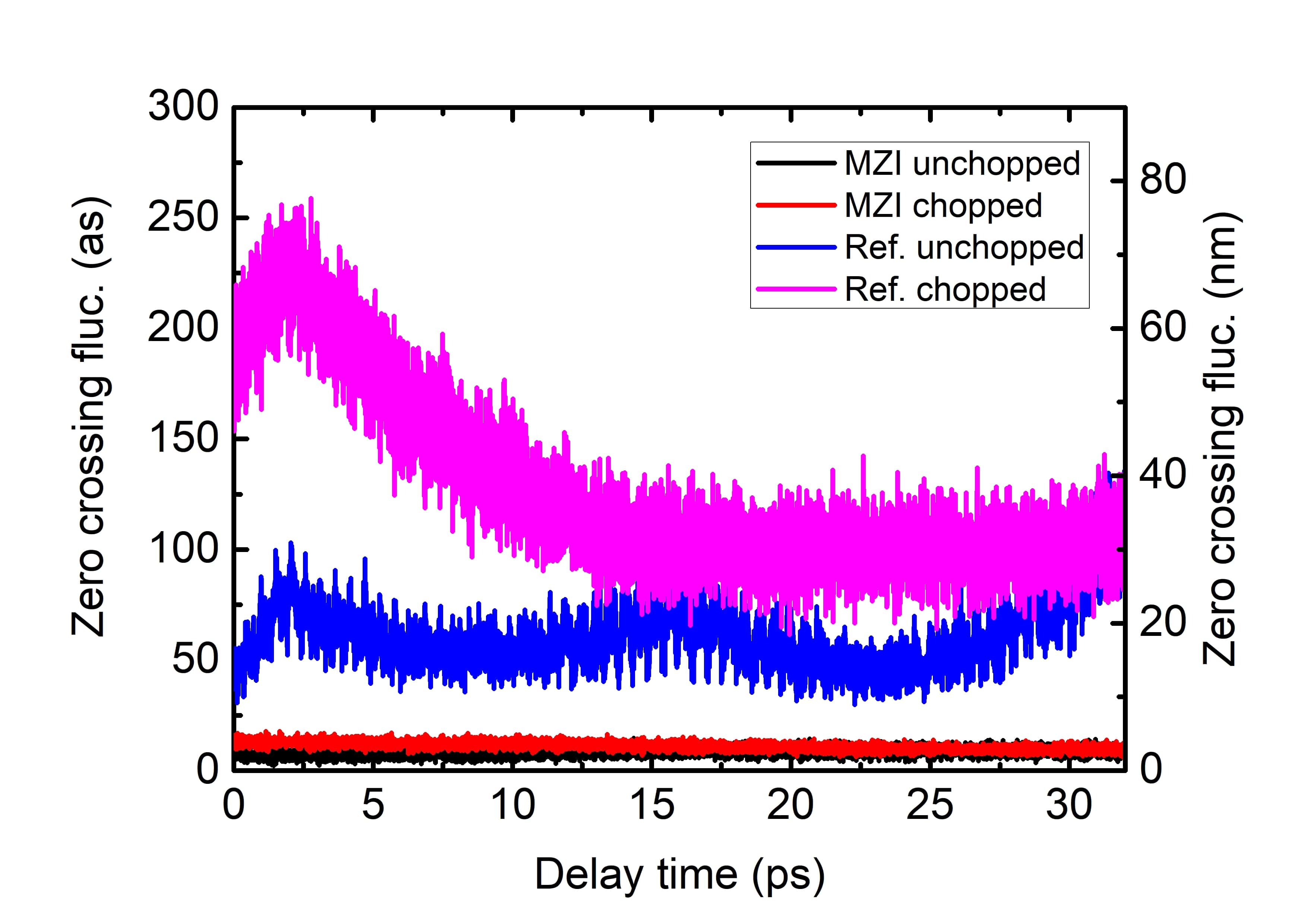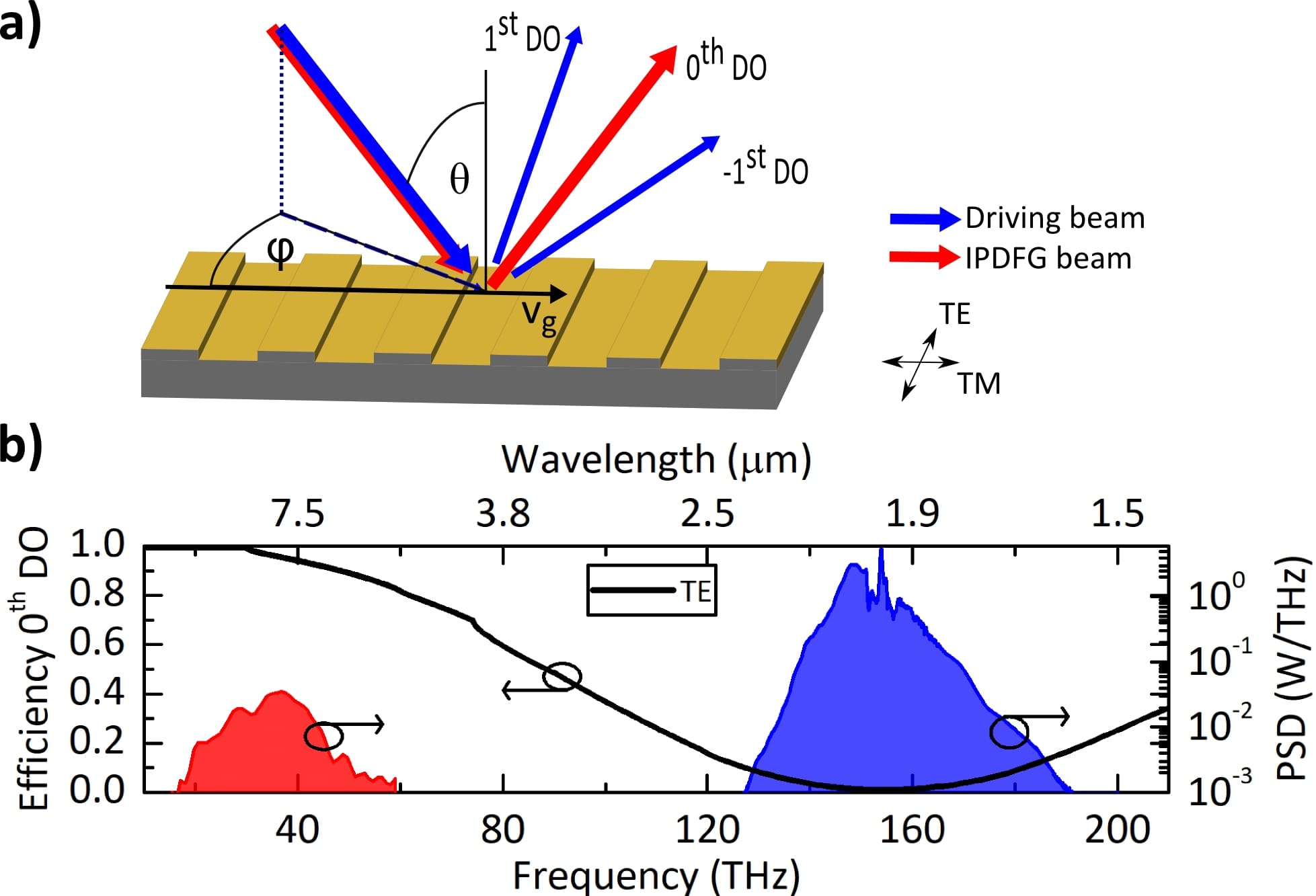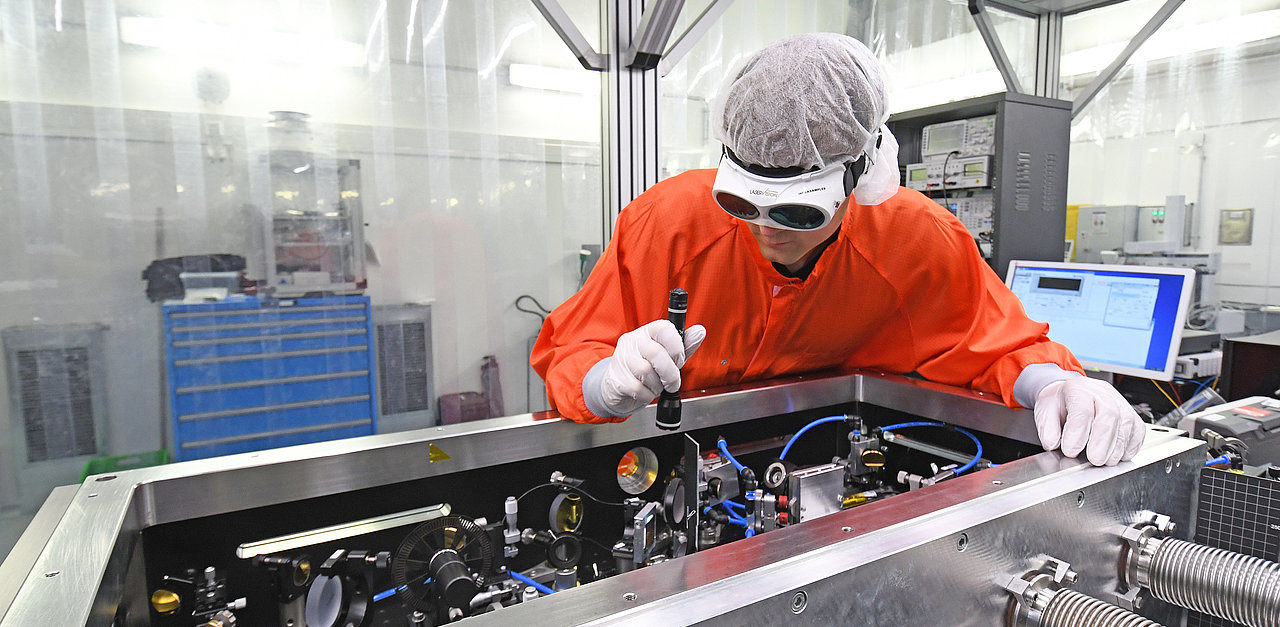Firstly, our team used a commercially available optical positioning device (PicoScale Interferometer, SmarAct) and extended its usability from a simple Michaelson interferometer to the Mach-Zehnder geometry even with one of its arms being mechanically chopped (for lock-in amplification). In a test setup with an interferometer arm length of one meter, we have demonstrated for forty 1-cm long delay scans a sub-4 nm standard deviation over the whole range. Tracking the stage movement alone is with 20 nm, or in the chopped case 40 nm, worse due to air fluctuations in the interferometer (left Figure). With longer acquisition times even higher accuracies are possible.
Secondly, we introduced a dispersion-free long-pass filter for the MIR spectral region based on a gold grating. It is suitable for higher average powers than conventional filters and beyond the cut-on wavelength the usability is only limited by the gold reflectivity. By using three gratings, we kept 66 % of the desired MIR power while suppressing the generating NIR power (>20W) by more than three orders of magnitude. This enables higher average powers to be used for MIR generation and shorter MIR pulses in this spectral region.


Figure: Difference between using the Mach-Zehnder configuration and just measuring the stage position for 40 scans in air (left). (a) Concept of dispersion-free separation of the MIR (red) from the fundamental beam (blue) via a grating and (b) the corresponding diffraction efficiency and sample spectra (right).
Original Publications:
Schweinberger, W. et al., Interferometric delay tracking for low-noise Mach-Zehnder-type scanning measurements. Optics Express 27, 4789-4798 (2019).
Gerz, D. et al., Mid-infrared long-pass filter for high-power applications based on grating diffraction. Optics Letters 44, 3014-3017 (2019)
